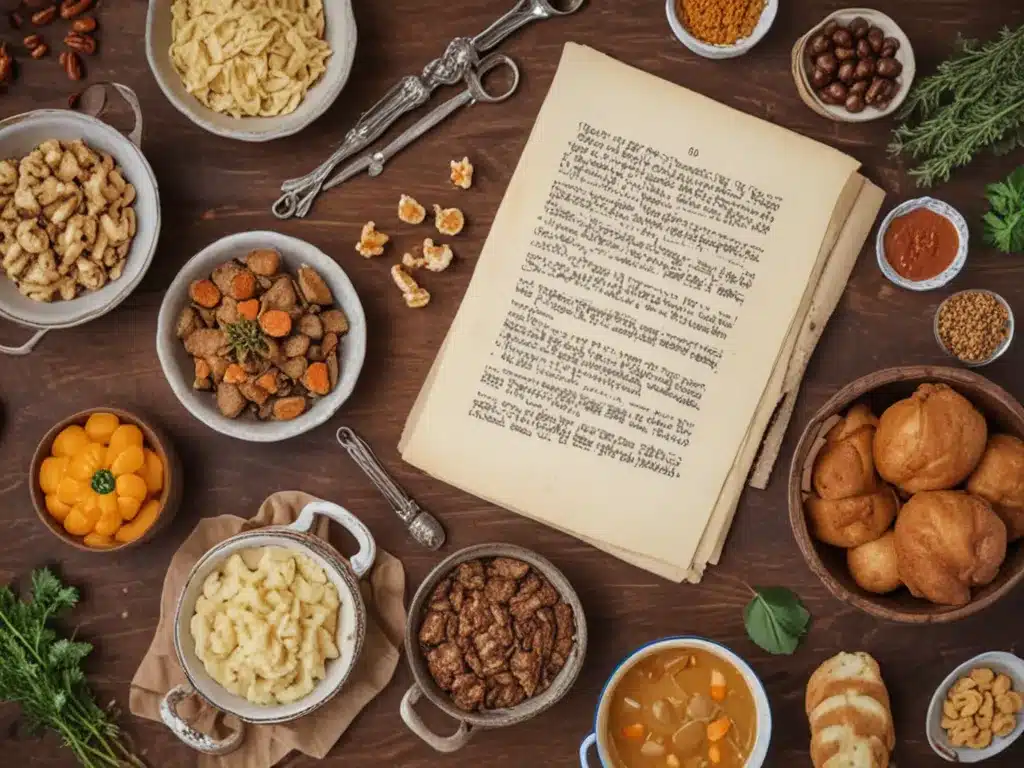
The Passing Down of Culinary Knowledge Through Generations
As I was growing up, one of my favorite things to do was to spend time in the kitchen with my grandmother. She had a wealth of culinary knowledge and experience that she enjoyed sharing with me. Some of my fondest memories are of her teaching me how to prepare our family’s most treasured recipes.
Many of the recipes we hold dear have been passed down for generations. My grandmother learned them from her mother, who learned from her mother before her. In this way, our family recipes represent not just food, but also our cultural history and tradition. Cooking these dishes allows us to feel connected to those who came before us.
My grandmother would tell me stories about our ancestors as we worked. She spoke of how my great-grandmother used to prepare special meals for holidays and celebrations. Certain ingredients or techniques would trigger memories for her of time spent in the kitchen with her own mother and grandmother. In this way, the recipes themselves became vessels for carrying family stories through the decades.
The Meaning Behind Ingredients and Cooking Methods
Many of our traditional recipes encode subtle meanings about our cultural identity and values. For instance, one staple dish uses inexpensive and accessible ingredients that could be grown or foraged locally. This reflects the importance our ancestors placed on self-sufficiency and frugality.
| Ingredient | Significance |
|---|---|
| Wheat | Represents our agrarian roots and connection to the land |
| Onions, garlic | Added flavor but were also used for their perceived health benefits |
| Herbs grown in the garden | Emphasis on using fresh, home-grown ingredients |
The cooking methods also carry symbolic importance. Many dishes are slowly simmered or stewed for hours, implying notions of patience, community, and spending time with family. Others are baked, signifying warmth, nourishment, and the bond of sharing a meal.
Understanding the deeper meanings behind ingredient choices and techniques helps me appreciate how perfectly our traditional foods reflect our cultural identity. They acts as both nourishment for the body and nourishment for the soul.
Recipes as Reminders of People and Place
Certain recipes are strongly associated with particular relatives, bringing them happily to mind. For instance, whenever I prepare my great-aunt’s signature roasted carrots, I think fondly of her wit and kind spirit. Another favorite, a rich beef stew, always makes me recall cozy winter evenings curled up next to my grandfather.
In addition, some dishes evoke memories of places. There is a bread pudding recipe from my mother’s childhood hometown that, as I bake it, fills my kitchen with the comforting scent of the nearby oak forest. A fish soup brings me back to summers spent at my family’s lakeside cabin.
In this way, cooking and sharing our traditional foods serves to honor the people and locations so important to our family history. Even simple ingredients become imbued with emotion and connection when incorporated into recipes with storied pasts. Food truly has become a portal linking my experiences to those of generations before me.
Adapting Recipes While Honoring Tradition
Though I treasure the history and memories woven into our family recipes, I also believe it is important to adapt them to modern lifestyles and tastes. With my grandmother’s guidance, I have tweaked a few dishes to make them healthier or more convenient for today’s busy world.
For example, we have lightened our creamy potato salad by mixing in Greek yogurt instead of mayonnaise. A casserole that once called for hours of simmering now has ingredients that can be prepped ahead and baked all at once. Both versions bring me joy, as one satiates my desire for tradition while the other acknowledges necessity of change.
With some recipes, I have even begun recording variations dreamed up by different family cooks over the decades. In this way, the collection continues to evolve while honoring all who have stewarded it. A recipe lives on not only as written, but through the adaptations that keep it relevant to new generations. Tradition is not stagnant, but something that shifts along with lives and times even as its heart remains.
In the end, what connects me most deeply to the past is not rigid adherence to rules, but rather the act of sharing sustenance and celebrating community. So long as a dish brings to mind fond memories and makes me feel closer to loved ones, its essence survives – no matter the precise form it takes. Cooking and passing down our treasured recipes keeps both history and hope alive.






